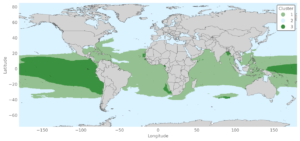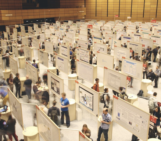
A few weeks ago, at the European Geosciences Union General Assembly EGU23, a group of researchers from different disciplines briefed the media about the impact of war on the oceans, sands, and people. Among them, Florian Ulrich Jehn’s presentation stood out for its rather unlikely proposition: that seaweed appeared to be a promising candidate as a resilient food solution in nuclear winter.
In a follow up chat I had with the scientist post the press briefing, I asked him about the insights that led to this “seaweed solution” and whether world governments were truly ready to explore such options. Read on for excerpts from the interview:
Hi Florian, thank you for joining us today. Before we begin, could you tell our readers a little about yourself and your background?
Sure. I have a background in environmental science and completed my doctorate in hydrology. However, during my studies, I became increasingly interested in topics with a greater potential impact on the world, and I shifted my research focus to the field of existential risk studies. This led me to publish research about the focus of the IPCC (we do too little research for extreme scenarios) and finally to the Alliance to Feed the Earth in Disasters (ALLFED). At ALLFED we focus on identifying and developing resilient food systems that could continue to produce food after catastrophic events like a large volcanic eruption or a nuclear war. On a personal level, I also write actively about these issues on my blog Existential Crunch, so feel free to read more about this there.
Given recent geopolitical events in Ukraine and around the world, your presentation at EGU23 seemed very timely. What is the relationship between war, nuclear winter and food insecurity?
The direct effects of a nuclear war, like radiation, are already devastating, but the indirect effects might be even worse. During a nuclear war, many major cities will go up in flames, which could lift soot into the upper atmosphere and spread around the globe. This soot would block sunlight and cause global temperatures to plummet, leading to what we call a nuclear winter. The reduction in sunlight would significantly reduce crop yields and could result in widespread food shortages and famine. At ALLFED, we focus on identifying resilient food sources that will ensure food security even in such extreme conditions.
How did you happen upon seaweed as a resilient food option for nuclear winter? What were some of the other options explored?
Seaweed is a very promising candidate, as it can grow quickly and requires minimal resources. We have also explored single-cell protein, which is produced by feeding substances like methane to single-cell organisms in a bioreactor. These organisms then produce proteins and amino acids that can be used as food. Another option is crop relocation. During a nuclear winter, the tropics are likely to remain relatively warm, meaning that crops that are typically grown in higher latitudes could potentially be relocated to lower latitudes.

Seaweed can be grown in nuclear winter.
Dark Green: very suitable
Light Green: Somewhat suitable
Blue: Unsuitable
In terms of infrastructure and resources, are some countries better prepared or more suitable to grow seaweed?
Yes, surely. There are many countries in the world that already grow seaweed today, especially in Asia and South America. For example, Chile and Indonesia would likely still be able to continue to grow seaweed even in a very severe nuclear winter. However, the picture is quite different in Europe. Here, only a little seaweed is grown, and a nuclear winter would leave most of the waters around Europe too cold to grow seaweed.
In your view, what are next steps for world governments, private organizations and the scientific community? Do you think decision makers are open to these suggestions or that more needs to be done?
The next step is acknowledging that scenarios like nuclear war or large volcanic eruptions have to be taken seriously. It is often even difficult to get funding for our research, as the topic is so neglected. Governments could start preparing by using the research done at ALLFED and other institutes to explore how they would fare in such extreme scenarios. Right now, countries like Austria or Germany would have trouble with providing enough food for their population if a nuclear war or large volcanic eruption came to pass. We hope that in the future every country will plan not only for smaller extreme events like floods, but also for rare but very impactful events like nuclear war. The mitigation measures intended for nuclear war are also multi-purpose. This means they will also give us more resilience in other sun-blocking scenarios like after an asteroid impact.
We thank Florian for his insights and for sharing his findings with us. If you have any comments or questions, we encourage you to type them in the comments below. You can watch the entire presentation here, and feel free to share this blog with others in your professional and personal networks!




